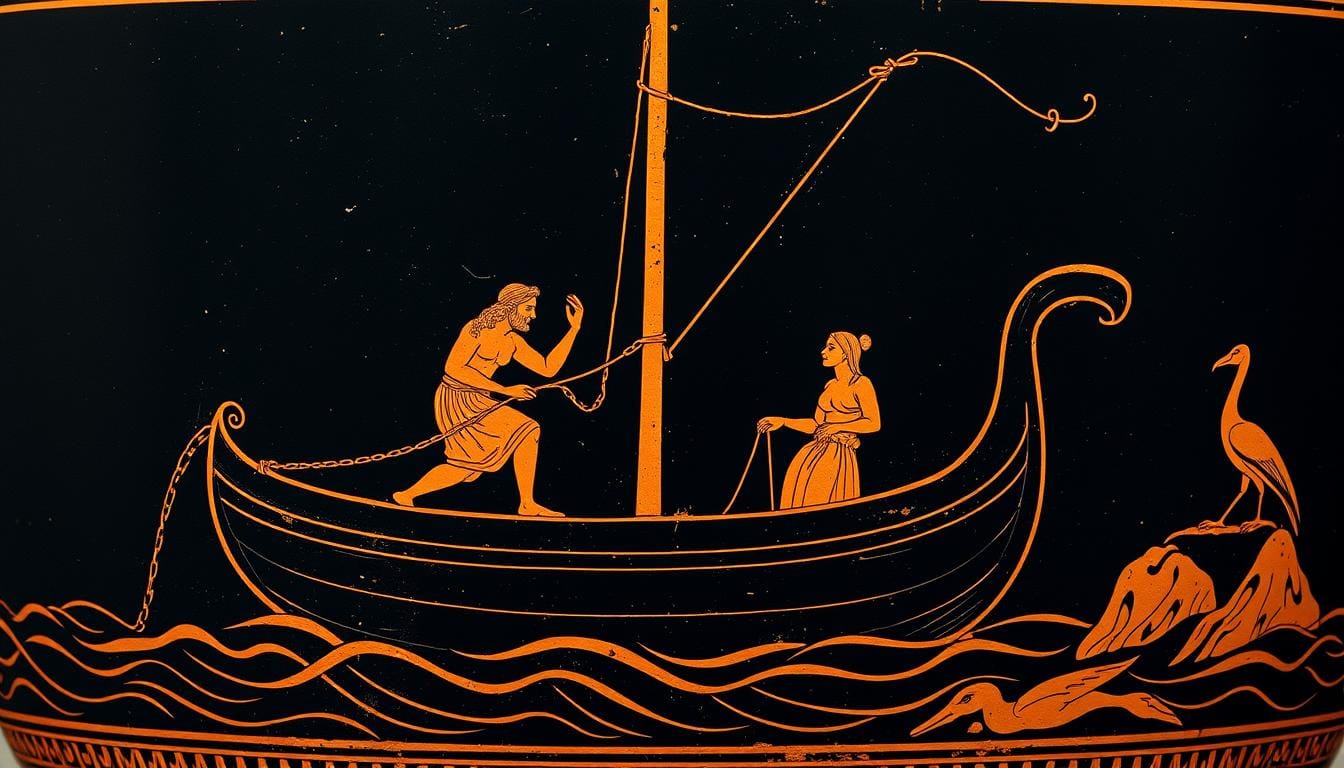“Fortune was not kinder to Alexander in the choice of ground, than he was careful to improve it to his advantage.” These words from Plutarch capture the essence of the Battle of Issus, where tactical brilliance met favorable terrain to create one of history’s most consequential military engagements. On November 5, 333 BCE, the young Macedonian king Alexander faced the might of the Persian Empire led by Darius III in a narrow coastal plain that would forever change the balance of power in the ancient world.
Political Climate Before the Battle of Issus
Following the death of his father Philip II in 336 BCE, Alexander inherited not only the Macedonian throne but also leadership of the Hellenic League and its ambitious plan to invade Persia. This campaign was ostensibly to avenge the earlier Persian invasions of Greece under Darius I and Xerxes, though Alexander’s personal ambitions clearly extended beyond mere retribution.
By 333 BCE, Alexander had already secured significant victories in Asia Minor, most notably at the Battle of Granicus where he defeated the Persian satraps. These early successes allowed him to control much of western Asia Minor, but the Persian Empire remained formidable under Darius III, who had ascended to the throne in 336 BCE through palace intrigue rather than direct royal succession.
Darius initially underestimated Alexander, delegating the defense of Asia Minor to local satraps rather than personally leading his forces. After the Macedonian victory at Granicus, however, Darius recognized the serious threat and began assembling a massive imperial army drawn from across his vast territories, from Egypt to Bactria.
Strategic Maneuvers: Setting the Stage for Confrontation
Alexander’s strategy focused on securing coastal cities to neutralize the powerful Persian fleet by denying them ports. After capturing Miletus and Halicarnassus, he moved inland through Anatolia. By autumn of 333 BCE, Alexander received intelligence that Darius had assembled a large army at Sochoi in northern Syria.
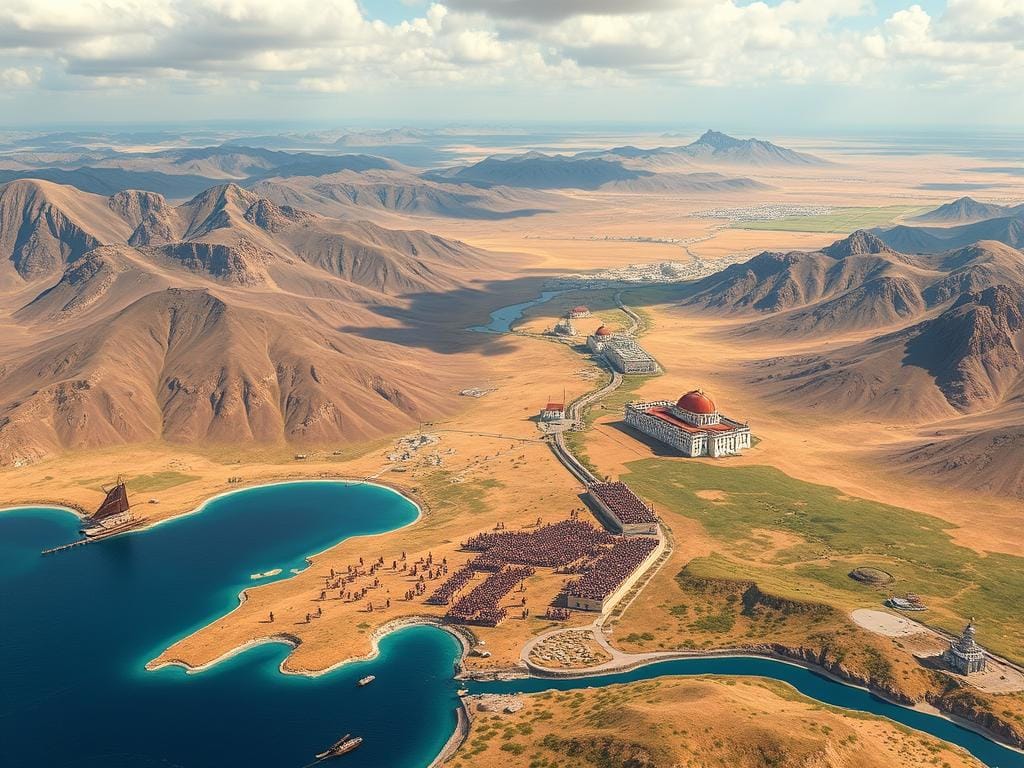
In a brilliant strategic move, Darius marched his army north through the Amanic Gates, effectively placing his forces behind Alexander’s position and cutting off the Macedonian supply lines. Darius captured the town of Issus, where he brutally tortured and executed wounded Macedonian soldiers left behind, cutting off the hands of survivors—an act that would further motivate Alexander’s troops.
When Alexander learned that Darius had outflanked him, he was forced to countermarch north. The stage was set for a confrontation at the Pinarus River on a narrow coastal plain between the Mediterranean Sea and the Amanus Mountains—a location that would prove critical to the battle’s outcome.
Battlefield Terrain: The Decisive Factor
The battlefield at Issus presented a unique geographical situation that would ultimately favor Alexander despite his numerical disadvantage. The coastal plain was only about 2.6 kilometers wide, bounded by mountains to the east and the Gulf of Issus to the west. This narrow corridor neutralized Darius’ numerical superiority by preventing him from deploying his full army effectively.
The Pinarus River, though small, created a natural defensive line that Darius reinforced with field fortifications along the bank. Modern historians have debated the exact identification of this river, with some suggesting it was the Deli Tchai while others argue it was the Payas River based on ancient accounts of battlefield measurements.
Arrian, one of the most reliable ancient sources on Alexander’s campaigns, described the terrain’s impact: “The narrowness of the ground was much more advantageous to Alexander’s army than to the Persian multitude.” This geographical constraint would prove to be one of Darius’ most significant tactical errors—allowing his massive numerical advantage to be neutralized by terrain.
Opposing Forces: Strength and Composition
The exact size of the armies at Issus remains debated among historians. Ancient sources provide wildly inflated numbers for the Persian forces, with estimates ranging from 250,000 to 600,000 soldiers. Modern scholars consider these figures implausible given the logistical limitations of the ancient world.
Alexander's Army
- Total strength: Approximately 37,000 men
- Heavy infantry: 24,000 (including 9,000 phalangites, 3,000 hypaspists, and 12,000 Greek hoplites)
- Light infantry: 8,000 (Thracians, Illyrians, Agrianians, and archers)
- Cavalry: 5,100 (including the elite Companion cavalry)
- Commanded personally by Alexander with Parmenion leading the left wing
Darius' Army
- Total strength: Modern estimates suggest 50,000-100,000 men
- Persian Immortals: 10,000 elite infantry
- Greek mercenaries: 10,000 (forming Darius’ center)
- Cavalry: 11,000 (concentrated on the right flank)
- Various infantry from across the empire, including Armenians and Cardaces
- Commanded by Darius III from a position in the center
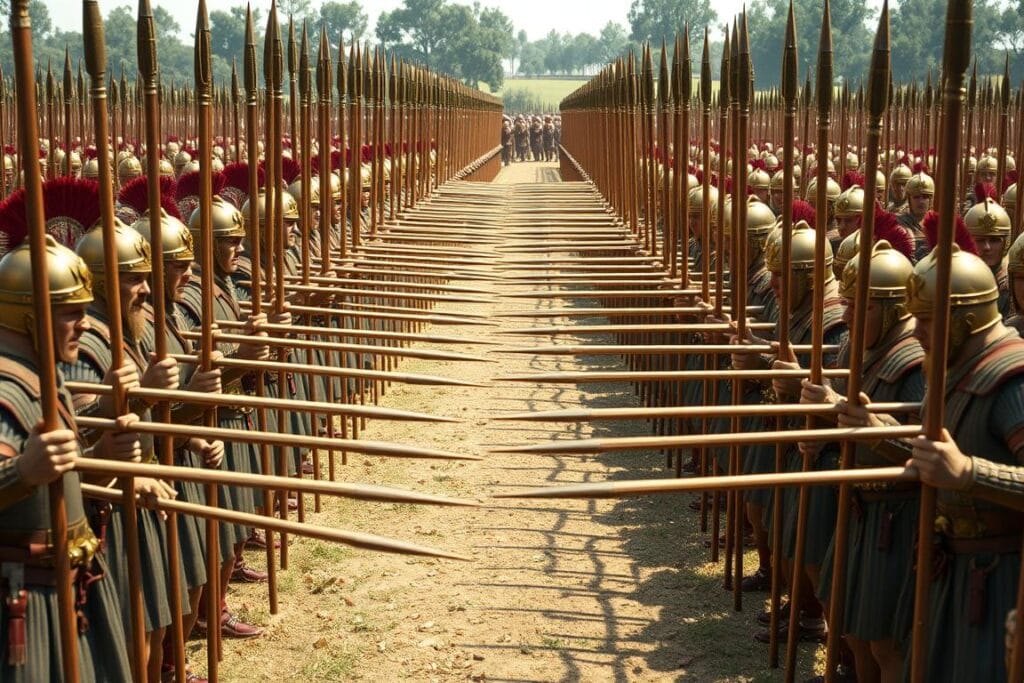
While outnumbered, Alexander’s army possessed significant advantages in training, experience, and cohesion. The Macedonian phalanx, armed with the long sarissa pike, was a formidable formation that had already proven effective against Persian forces at Granicus. The elite Companion cavalry, led by Alexander himself, would play a decisive role in the coming battle.
Battle Tactics: Alexander's Genius vs. Persian Strategy
As the armies deployed along the Pinarus River, their formations revealed their tactical intentions. Darius positioned his strongest units—the Greek mercenaries and Persian Immortals—in the center, with his heavy cavalry concentrated on his right flank by the coast. His infantry extended into the foothills, attempting to outflank Alexander’s right.

Alexander deployed his phalanx in the center, with allied cavalry under Parmenion on the left flank and the elite Companion cavalry on the right under his personal command. Recognizing the threat to his right flank, Alexander positioned a detachment of light infantry and cavalry to protect against the Persian infantry in the foothills.
“Alexander was waiting for Darius to come south around the Amanus Mountain range because the pass Darius would have used, the Belen Pass, was much closer to Sochi and offered the quickest access to the area Alexander defended.”
— Arrian, The Campaigns of Alexander
The battle began with nearly simultaneous cavalry charges—the Persian cavalry against Parmenion’s left wing and Alexander’s Companion cavalry against the Persian left. Initially, the battle went poorly for the Macedonians. The center phalanx struggled to cross the river against the fortified bank and suffered heavy casualties from the Greek mercenaries. Arrian notes that 120 Macedonian officers were killed in this phase.
On the left, Parmenion’s cavalry was hard-pressed by the numerically superior Persian cavalry but managed to hold their ground through disciplined countercharges. This resilience was crucial, as a collapse of the left wing would have allowed the Persian cavalry to attack the phalanx from behind.
The Decisive Moment: Alexander's Gambit
The battle’s turning point came when Alexander, leading his Companion cavalry on the right flank, identified a weakness in the Persian left wing. After his light infantry cleared away the Persian skirmishers, Alexander led a powerful cavalry charge that shattered the Persian left flank.
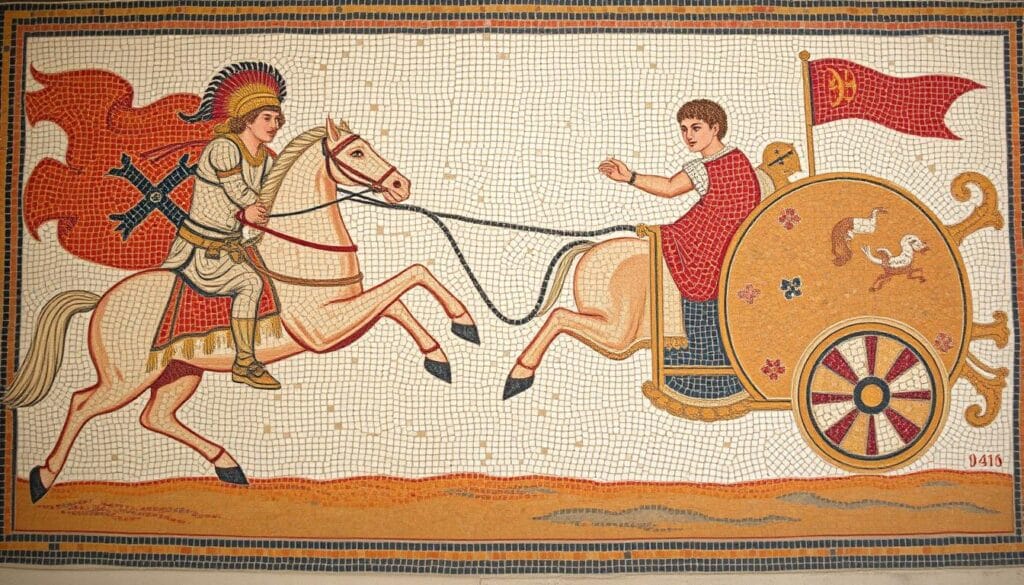
With the Persian left collapsing, Alexander wheeled his cavalry toward the center, striking the flank of the Greek mercenaries who had been holding back the Macedonian phalanx. This maneuver relieved pressure on the phalanx, which renewed its assault across the river.
In the center of the battlefield, Alexander spotted Darius in his royal chariot. According to ancient accounts, Alexander drove directly toward the Persian king, determined to engage him personally. Darius’ brother Oxathres attempted to block Alexander’s charge but was killed in the ensuing combat.
Deepen Your Understanding of Ancient Warfare
Want to explore more about Alexander’s revolutionary military tactics? Read our article.
As Alexander and his companions closed in, Darius faced a critical decision. Ancient sources differ on whether he fled out of cowardice or was carried away by panicked horses, but the result was the same—the Persian king left the battlefield. As Plutarch recounts: “Darius, when he saw his forces in full flight and Alexander pressing hard upon him, turned his chariot and fled, being the first to do so.”
The sight of their king fleeing triggered a general collapse of Persian morale. What had been an organized battle line quickly disintegrated into a chaotic retreat, with many Persian soldiers trampled to death in the panic.
Aftermath and Historical Significance
The Battle of Issus resulted in a decisive victory for Alexander. Ancient sources claim Persian casualties numbered between 20,000 and 40,000, while Alexander lost only about 450 killed and 4,500 wounded. Modern historians consider these figures exaggerated but agree the Persian losses were substantial.
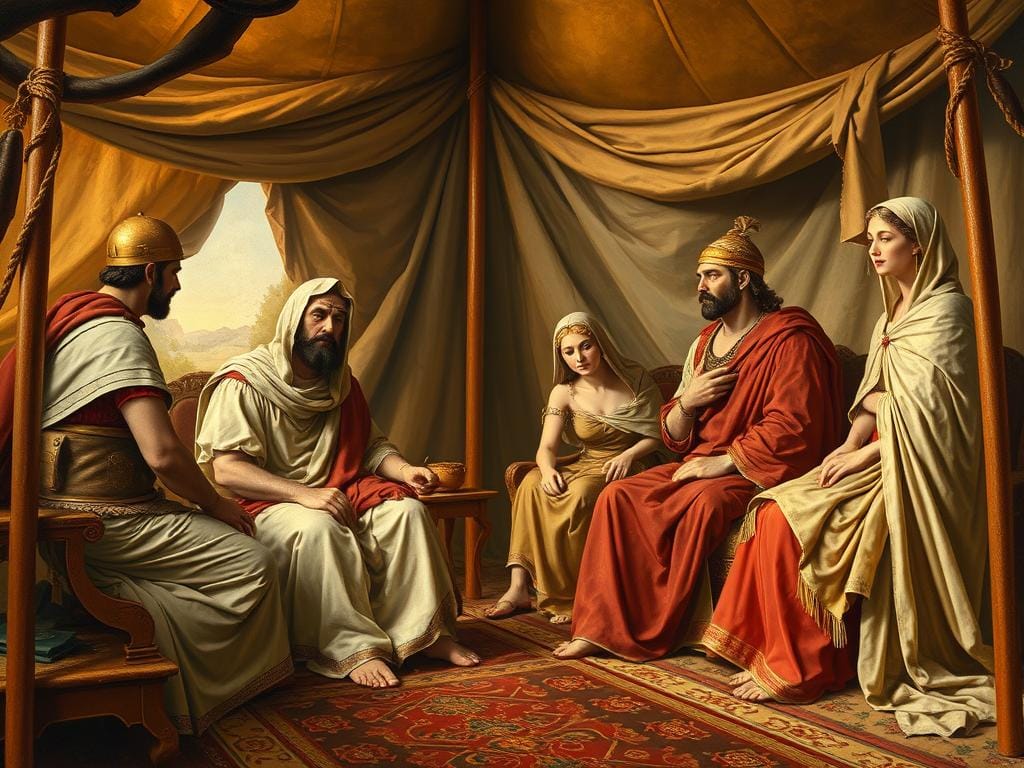
Among the spoils of victory was Darius’ abandoned royal tent, which contained not only vast treasures but also the Persian king’s family—his mother Sisygambis, his wife Stateira I, and his daughters Stateira II and Drypetis. Alexander treated the royal women with respect, assuring them they would come to no harm. This chivalrous behavior enhanced Alexander’s reputation and contrasted with Darius’ earlier treatment of Macedonian prisoners.
The geopolitical consequences of Issus were profound. The victory opened the way for Alexander to control the eastern Mediterranean coastline, neutralizing the Persian fleet by denying it ports. In the months following Issus, Alexander captured the wealthy Phoenician cities, including a seven-month siege of Tyre, and then proceeded to Egypt, where he was welcomed as a liberator from Persian rule.

Darius, having escaped the battlefield, sent letters to Alexander offering peace terms that included ceding all territories west of the Euphrates River and a massive ransom for his family. Alexander famously rejected these terms, declaring that he would only negotiate with Darius as “King of Asia to a subject.” The two would meet again two years later at the Battle of Gaugamela, where Alexander would secure final victory over the Persian Empire.
Archaeological Evidence: The Alexander Mosaic
The most famous artistic representation of the Battle of Issus is the Alexander Mosaic, discovered in the House of the Faun at Pompeii. Created in the late 2nd century BCE, this masterpiece is believed to be a copy of an earlier Hellenistic painting from the 4th century BCE.
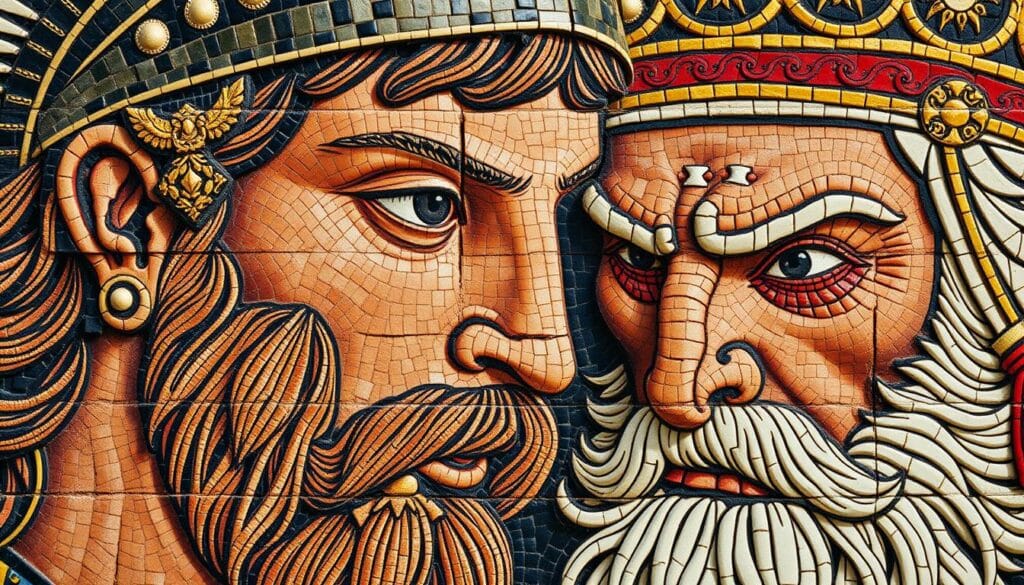
The mosaic captures the dramatic moment when Alexander, mounted on his famous horse Bucephalus, charges directly at Darius, who is depicted turning to flee in his chariot. Art historians note the psychological depth conveyed through the contrasting expressions—Alexander’s determined focus versus Darius’ fear and confusion.
Beyond artistic representations, archaeological evidence of the battle itself is limited. The exact location of the Pinarus River remains debated, though most scholars place it near the modern Turkish town of Dörtyol. Excavations in the region have uncovered Persian and Greek artifacts from the appropriate period, but definitively linking them to the battle has proven challenging.
Modern Interpretations: Military and Historical Significance
Modern military historians view the Battle of Issus as a masterclass in tactical adaptation and leadership. Alexander’s ability to identify and exploit weaknesses in the enemy formation, particularly his decisive cavalry charge, exemplifies the principles of concentration of force and maneuver warfare that remain relevant in military doctrine today.
Historians also emphasize how Issus demonstrates the importance of leadership in ancient warfare. The contrast between Alexander, who led from the front and personally engaged in combat, and Darius, who fled when threatened, highlights how personal leadership could influence battlefield outcomes in the ancient world.
From a broader historical perspective, Issus represents a pivotal moment in the power shift from East to West. The battle accelerated the decline of the Persian Empire and facilitated the spread of Hellenistic culture throughout the Near East, creating the cultural synthesis that would characterize the Hellenistic period.
“The Battle of Issus was not merely a military engagement but a cultural inflection point—the moment when the center of power in the ancient world began its decisive shift from Persia to the Hellenic world.”
— Guy MacLean Rogers, Alexander: The Ambiguity of Greatness
Some scholars view Issus as evidence of Alexander’s strategic genius, while others emphasize how Darius’ errors contributed to the outcome. The decision to fight in the narrow coastal plain, abandoning the advantages of the open Syrian plains, is widely regarded as Darius’ most critical mistake.
Conclusion: Legacy of a Decisive Encounter
The Battle of Issus stands as one of history’s most consequential military engagements—a turning point that altered the trajectory of both Western and Eastern civilizations. Alexander’s victory demonstrated the effectiveness of his combined-arms tactics and cemented his reputation as an undefeated commander.
For Darius and the Persian Empire, Issus marked the beginning of the end. Though the empire would continue to resist for another two years until the Battle of Gaugamela, the psychological impact of Issus—where the Great King fled before his adversary—undermined Persian authority throughout the empire.
Perhaps most significantly, Issus exemplifies how individual leadership and tactical decisions can shape world history. In the narrow coastal plain between mountains and sea, two civilizations clashed, and the younger, more dynamic force prevailed—setting in motion the Hellenistic age that would bridge the classical and Roman worlds.
